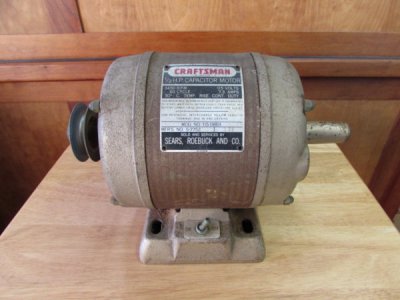- Joined
- Jul 18, 2017
- Messages
- 400
Hi Guys  ,
,
I noticed that the motor for my new-old Inca 570 jointer/planer has a capacitor hanging next to the 220v motor. With all the AC motors in my garage, none of them, except for this one and for my little surface grinder, has capacitors. I tried reading up on it via google, but didn't find answers to my questions. So, I hope someone here can educate me.
Here are a few of my questions
Do all AC motors need capacitors?
Are copacitators ever built into the motor?
Is it a big no-no to run a motor without a capacitor?
Is there any important info about capacitors that I didn't ask?
Ok. As you can tell, my Friday nights are full of non-stop parties and excitement ;-) as I get my swerve on with capacitators.
I noticed that the motor for my new-old Inca 570 jointer/planer has a capacitor hanging next to the 220v motor. With all the AC motors in my garage, none of them, except for this one and for my little surface grinder, has capacitors. I tried reading up on it via google, but didn't find answers to my questions. So, I hope someone here can educate me.
Here are a few of my questions
Do all AC motors need capacitors?
Are copacitators ever built into the motor?
Is it a big no-no to run a motor without a capacitor?
Is there any important info about capacitors that I didn't ask?
Ok. As you can tell, my Friday nights are full of non-stop parties and excitement ;-) as I get my swerve on with capacitators.



